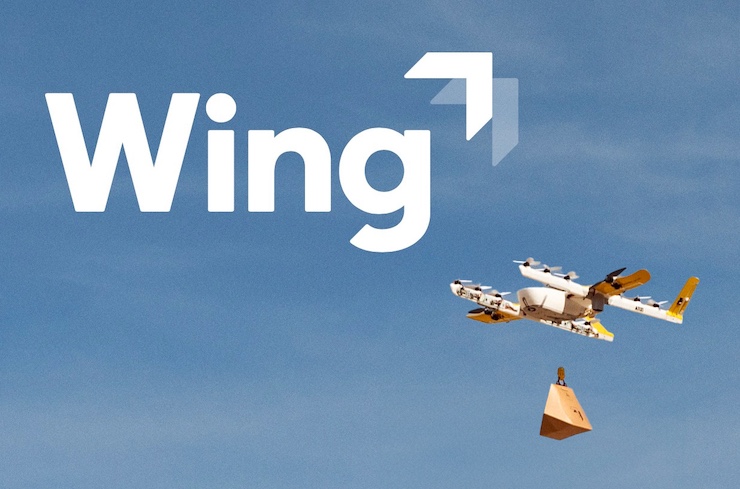
Originally launched in 2012 as part of Google’s X moonshot division, Wing began as an experimental drone project focused on last-mile delivery. Over time, it matured into a standalone company under Alphabet, officially launching as a commercial operation in 2018. In 2019, Wing made history by becoming the first drone delivery company to receive Air Carrier Certification from the Federal Aviation Administration (FAA), which allowed it to operate legally as an airline. Since then, Wing has steadily scaled its operations, making more than 350,000 deliveries worldwide while fine-tuning its technology across pilot programs in Australia, Finland, and the United States.
Now, Wing is turning heads with its most advanced delivery drone to date. The updated drone design is part of what the company calls its “aircraft library” concept, a scalable platform that enables rapid adaptation of drone bodies and components based on delivery needs. While the previous standard model could carry payloads of around 2.5 lbs, the newest version has doubled that capacity to 5 lbs without compromising speed, range, or efficiency. This breakthrough allows Wing to fulfill more types of orders, particularly bulkier or bundled deliveries like groceries, medications, or multiple restaurant meals.
The new model retains the core flight characteristics of earlier versions despite its increased payload capacity. It cruises at about 65 mph, completes round-trip deliveries of up to 12 miles, and maintains a flight time of 20 to 25 minutes, thanks to improved battery efficiency and aerodynamic design. With a wingspan of approximately four feet and an empty weight of around 10 lbs, the drone uses a high-capacity lithium polymer battery capable of delivering one to two kilowatt-hours of power per flight.
Its hybrid system combines vertical takeoff and landing with fixed-wing flight, offering the precision needed for dense urban environments along with the cruise efficiency of an airplane. Most components are modular and shared across Wing’s fleet, which streamlines maintenance and keeps production costs between twelve and fifteen thousand dollars per unit, competitive pricing for a drone equipped with advanced automation and flight control systems.
Adam Woodworth, CEO of Wing, emphasized that this new model is about giving customers more flexibility while maintaining operational consistency. “Think of it like how airlines operate different aircraft for different routes. This new aircraft will streamline our deliveries of larger orders,” he said. Woodworth added that the new design will enable customers to bundle more items into a single delivery, improving efficiency and cutting down on wait times. “With the new aircraft carrying more food, medicine, and household essentials, customers will be able to bundle their orders better and receive them in one quick trip,” he explained.
A senior engineer at Wing shared that the new drone shares more than 90% of its components with the existing model. However, it uses a reinforced tail section and more powerful electric motors to handle the added payload. The engineer noted that maintaining compatibility with the company’s current infrastructure was a major goal during development. The new model can still be used with Wing’s existing autoloaders, delivery zones, and software systems, making the transition seamless from a logistics standpoint.
Another important aspect of Wing’s technological edge is its ability to manage airspace through an automated unmanned traffic management (UTM) platform. This system allows drones to be routed dynamically, avoiding conflicts with other aircraft while optimizing flight paths for speed and safety. The UTM platform is already being used in pilot programs in Texas and Virginia, where multiple drone service providers are sharing the same low-altitude corridors.
While many companies are just beginning to explore what drone delivery might look like at scale, Wing is already demonstrating how a modular and data-driven approach can yield results in real-world environments. With its latest drone, the company is expanding the kinds of deliveries it can offer while maintaining the same high level of service.
The design improvements reflect a broader strategy of building a delivery ecosystem that is fast, flexible, and scalable. Wing’s ability to evolve its drone without disrupting its existing infrastructure offers a clear advantage in an increasingly crowded field. As drone delivery becomes more common in American suburbs and beyond, Wing’s quiet but steady progress suggests that Alphabet’s early investment is beginning to take flight in a very real and practical way.
|